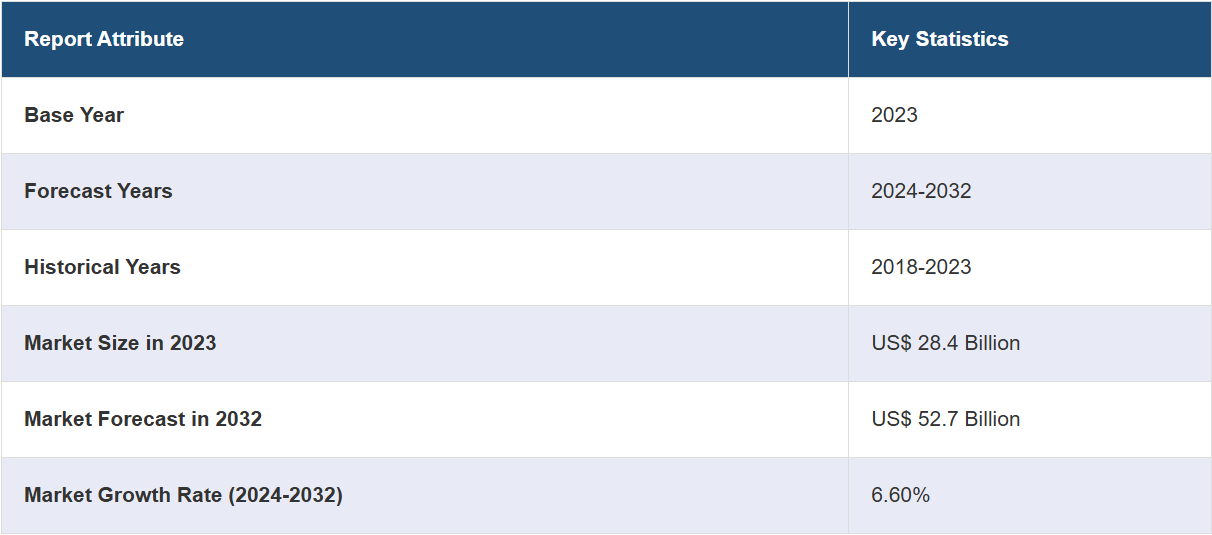❖本調査資料に関するお問い合わせはこちら❖
タンパク質治療薬とは、タンパク質、通常は生物学的に生成された分子を利用して、さまざまな病気や疾患の予防、管理、治療を行う医療行為を指します。これらの治療用タンパク質には、抗体、酵素、ホルモン、または体内の生物学的プロセスにおいて重要な役割を果たすその他の機能性タンパク質が含まれます。タンパク質治療薬は、がん細胞への結合や免疫反応の調節など、特定の疾患メカニズムを標的にするように設計されており、従来の医薬品と比較して、高い精度と副作用の低減を実現しています。それらは、組み換えDNA技術を含むバイオテクノロジー技術を用いて製造されることが多く、注射や点滴、その他の投与方法で投与されます。タンパク質治療薬の例としては、関節リウマチなどの自己免疫疾患の治療に用いられるモノクローナル抗体、糖尿病の管理に用いられるインスリン、血友病の治療に用いられる凝固因子などがあります。これらの治療法は、医学に革命をもたらし、幅広い疾患に効果的な治療を提供すると同時に、継続的な研究開発努力により、常に進化を続けています。
日本のタンパク質治療薬市場の動向:
日本におけるタンパク質治療薬市場は、その成長を後押しするいくつかの主要な推進要因により、活況を呈しています。まず、バイオテクノロジーの進歩により、タンパク質ベースの薬剤開発に新たな道が開かれました。これは、特異性と有効性を高めた治療用タンパク質の生産を可能にする組み換えDNA技術の利用が増加していることにも示されています。さらに、がん、糖尿病、自己免疫疾患などの慢性疾患の増加により、革新的な治療法への需要が高まっています。その結果、製薬会社はこれらの疾患をターゲットとした新しいタンパク質治療薬の開発に多額の投資を行っています。また、地域人口の高齢化もタンパク質治療薬市場の大きな推進要因となっています。高齢者人口の増加に伴い、加齢に伴う症状に対応できる治療法へのニーズが高まっており、タンパク質ベースの医薬品への需要をさらに後押ししています。さらに、個々の患者に合わせた治療を行う個別化医療への新たな傾向が、予測期間中の日本のタンパク質治療薬市場を牽引すると予測されています。
日本のタンパク質治療薬市場のセグメンテーション:
IMARC Groupは、市場の各セグメントにおける主要な傾向の分析と、2024年から2032年までの国レベルでの予測を提供しています。当社のレポートでは、製品、治療分野、機能に基づいて市場を分類しています。
製品別洞察:
モノクローナル抗体(mAbs)
ヒトインスリン
エリスロポエチン
凝固因子
融合タンパク質
その他
本レポートでは、製品別に市場の詳細な内訳と分析を提供しています。これには、モノクローナル抗体(mAbs)、ヒトインスリン、エリスロポエチン、凝固因子、融合タンパク質、その他が含まれます。
治療領域別分析:
代謝性疾患
免疫疾患
血液疾患
癌
ホルモン疾患
遺伝性疾患
その他
治療分野別の市場の詳細な内訳と分析も報告されています。これには、代謝性疾患、免疫疾患、血液疾患、癌、ホルモン疾患、遺伝性疾患、その他が含まれます。
機能別分析:
酵素活性および調節活性
特殊標的活性
ワクチン
タンパク質診断
本レポートでは、機能別に市場を詳細に分類・分析しています。これには、酵素および調節活性、特殊標的活性、ワクチン、タンパク質診断が含まれます。
競合状況:
市場調査レポートでは、競合状況の包括的な分析も提供しています。市場構造、主要企業のポジショニング、トップの勝利戦略、競合ダッシュボード、企業評価象限などの競合分析がレポートで取り上げられています。また、すべての主要企業の詳しいプロフィールも提供されています。
このレポートで回答される主な質問:
日本のタンパク質治療薬市場はこれまでどのような実績を残しており、今後数年間でどのような実績を残すと考えられるか?
日本のタンパク質治療薬市場に与えたCOVID-19の影響は何か?
日本のタンパク質治療薬市場を製品別に分類するとどうなるか?
日本のタンパク質治療薬市場を治療分野別に分類するとどうなるか?
機能別の日本タンパク質治療薬市場の内訳は?
日本タンパク質治療薬市場のバリューチェーンにおけるさまざまな段階とは?
日本タンパク質治療薬の主な推進要因と課題は?
日本タンパク質治療薬市場の構造と主なプレーヤーは?
日本タンパク質治療薬市場の競争の程度は?

1 Preface
2 Scope and Methodology
2.1 Objectives of the Study
2.2 Stakeholders
2.3 Data Sources
2.3.1 Primary Sources
2.3.2 Secondary Sources
2.4 Market Estimation
2.4.1 Bottom-Up Approach
2.4.2 Top-Down Approach
2.5 Forecasting Methodology
3 Executive Summary
4 Japan Protein Therapeutics Market – Introduction
4.1 Overview
4.2 Market Dynamics
4.3 Industry Trends
4.4 Competitive Intelligence
5 Japan Protein Therapeutics Market Landscape
5.1 Historical and Current Market Trends (2018-2023)
5.2 Market Forecast (2024-2032)
6 Japan Protein Therapeutics Market – Breakup by Product
6.1 Monoclonal Antibodies (mAbs)
6.1.1 Overview
6.1.2 Historical and Current Market Trends (2018-2023)
6.1.3 Market Forecast (2024-2032)
6.2 Human Insulin
6.2.1 Overview
6.2.2 Historical and Current Market Trends (2018-2023)
6.2.3 Market Forecast (2024-2032)
6.3 Erythropoietin
6.3.1 Overview
6.3.2 Historical and Current Market Trends (2018-2023)
6.3.3 Market Forecast (2024-2032)
6.4 Clotting Factors
6.4.1 Overview
6.4.2 Historical and Current Market Trends (2018-2023)
6.4.3 Market Forecast (2024-2032)
6.5 Fusion Protein
6.5.1 Overview
6.5.2 Historical and Current Market Trends (2018-2023)
6.5.3 Market Forecast (2024-2032)
6.6 Others
6.6.1 Historical and Current Market Trends (2018-2023)
6.6.2 Market Forecast (2024-2032)
7 Japan Protein Therapeutics Market – Breakup by Therapy Area
7.1 Metabolic Disorders
7.1.1 Overview
7.1.2 Historical and Current Market Trends (2018-2023)
7.1.3 Market Forecast (2024-2032)
7.2 Immunological Disorders
7.2.1 Overview
7.2.2 Historical and Current Market Trends (2018-2023)
7.2.3 Market Forecast (2024-2032)
7.3 Hematological Disorders
7.3.1 Overview
7.3.2 Historical and Current Market Trends (2018-2023)
7.3.3 Market Forecast (2024-2032)
7.4 Cancer
7.4.1 Overview
7.4.2 Historical and Current Market Trends (2018-2023)
7.4.3 Market Forecast (2024-2032)
7.5 Hormonal Disorders
7.5.1 Overview
7.5.2 Historical and Current Market Trends (2018-2023)
7.5.3 Market Forecast (2024-2032)
7.6 Genetic Disorders
7.6.1 Overview
7.6.2 Historical and Current Market Trends (2018-2023)
7.6.3 Market Forecast (2024-2032)
7.7 Others
7.7.1 Historical and Current Market Trends (2018-2023)
7.7.2 Market Forecast (2024-2032)
8 Japan Protein Therapeutics Market – Breakup by Function
8.1 Enzymatic and Regulatory Activity
8.1.1 Overview
8.1.2 Historical and Current Market Trends (2018-2023)
8.1.3 Market Forecast (2024-2032)
8.2 Special Targeting Activity
8.2.1 Overview
8.2.2 Historical and Current Market Trends (2018-2023)
8.2.3 Market Forecast (2024-2032)
8.3 Vaccines
8.3.1 Overview
8.3.2 Historical and Current Market Trends (2018-2023)
8.3.3 Market Forecast (2024-2032)
8.4 Protein Diagnostics
8.4.1 Overview
8.4.2 Historical and Current Market Trends (2018-2023)
8.4.3 Market Forecast (2024-2032)
9 Japan Protein Therapeutics Market – Breakup by Region
9.1 Kanto Region
9.1.1 Overview
9.1.2 Historical and Current Market Trends (2018-2023)
9.1.3 Market Breakup by Product
9.1.4 Market Breakup by Therapy Area
9.1.5 Market Breakup by Function
9.1.6 Key Players
9.1.7 Market Forecast (2024-2032)
9.2 Kansai/Kinki Region
9.2.1 Overview
9.2.2 Historical and Current Market Trends (2018-2023)
9.2.3 Market Breakup by Product
9.2.4 Market Breakup by Therapy Area
9.2.5 Market Breakup by Function
9.2.6 Key Players
9.2.7 Market Forecast (2024-2032)
9.3 Central/ Chubu Region
9.3.1 Overview
9.3.2 Historical and Current Market Trends (2018-2023)
9.3.3 Market Breakup by Product
9.3.4 Market Breakup by Therapy Area
9.3.5 Market Breakup by Function
9.3.6 Key Players
9.3.7 Market Forecast (2024-2032)
9.4 Kyushu-Okinawa Region
9.4.1 Overview
9.4.2 Historical and Current Market Trends (2018-2023)
9.4.3 Market Breakup by Product
9.4.4 Market Breakup by Therapy Area
9.4.5 Market Breakup by Function
9.4.6 Key Players
9.4.7 Market Forecast (2024-2032)
9.5 Tohoku Region
9.5.1 Overview
9.5.2 Historical and Current Market Trends (2018-2023)
9.5.3 Market Breakup by Product
9.5.4 Market Breakup by Therapy Area
9.5.5 Market Breakup by Function
9.5.6 Key Players
9.5.7 Market Forecast (2024-2032)
9.6 Chugoku Region
9.6.1 Overview
9.6.2 Historical and Current Market Trends (2018-2023)
9.6.3 Market Breakup by Product
9.6.4 Market Breakup by Therapy Area
9.6.5 Market Breakup by Function
9.6.6 Key Players
9.6.7 Market Forecast (2024-2032)
9.7 Hokkaido Region
9.7.1 Overview
9.7.2 Historical and Current Market Trends (2018-2023)
9.7.3 Market Breakup by Product
9.7.4 Market Breakup by Therapy Area
9.7.5 Market Breakup by Function
9.7.6 Key Players
9.7.7 Market Forecast (2024-2032)
9.8 Shikoku Region
9.8.1 Overview
9.8.2 Historical and Current Market Trends (2018-2023)
9.8.3 Market Breakup by Product
9.8.4 Market Breakup by Therapy Area
9.8.5 Market Breakup by Function
9.8.6 Key Players
9.8.7 Market Forecast (2024-2032)
10 Japan Protein Therapeutics Market – Competitive Landscape
10.1 Overview
10.2 Market Structure
10.3 Market Player Positioning
10.4 Top Winning Strategies
10.5 Competitive Dashboard
10.6 Company Evaluation Quadrant
11 Profiles of Key Players
11.1 Company A
11.1.1 Business Overview
11.1.2 Product Portfolio
11.1.3 Business Strategies
11.1.4 SWOT Analysis
11.1.5 Major News and Events
11.2 Company B
11.2.1 Business Overview
11.2.2 Product Portfolio
11.2.3 Business Strategies
11.2.4 SWOT Analysis
11.2.5 Major News and Events
11.3 Company C
11.3.1 Business Overview
11.3.2 Product Portfolio
11.3.3 Business Strategies
11.3.4 SWOT Analysis
11.3.5 Major News and Events
11.4 Company D
11.4.1 Business Overview
11.4.2 Product Portfolio
11.4.3 Business Strategies
11.4.4 SWOT Analysis
11.4.5 Major News and Events
11.5 Company E
11.5.1 Business Overview
11.5.2 Product Portfolio
11.5.3 Business Strategies
11.5.4 SWOT Analysis
11.5.5 Major News and Events
Company names have not been provided here as this is a sample TOC. The complete list is provided in the report.
12 Japan Protein Therapeutics Market – Industry Analysis
12.1 Drivers, Restraints, and Opportunities
12.1.1 Overview
12.1.2 Drivers
12.1.3 Restraints
12.1.4 Opportunities
12.2 Porters Five Forces Analysis
12.2.1 Overview
12.2.2 Bargaining Power of Buyers
12.2.3 Bargaining Power of Suppliers
12.2.4 Degree of Competition
12.2.5 Threat of New Entrants
12.2.6 Threat of Substitutes
12.3 Value Chain Analysis
13 Appendix
